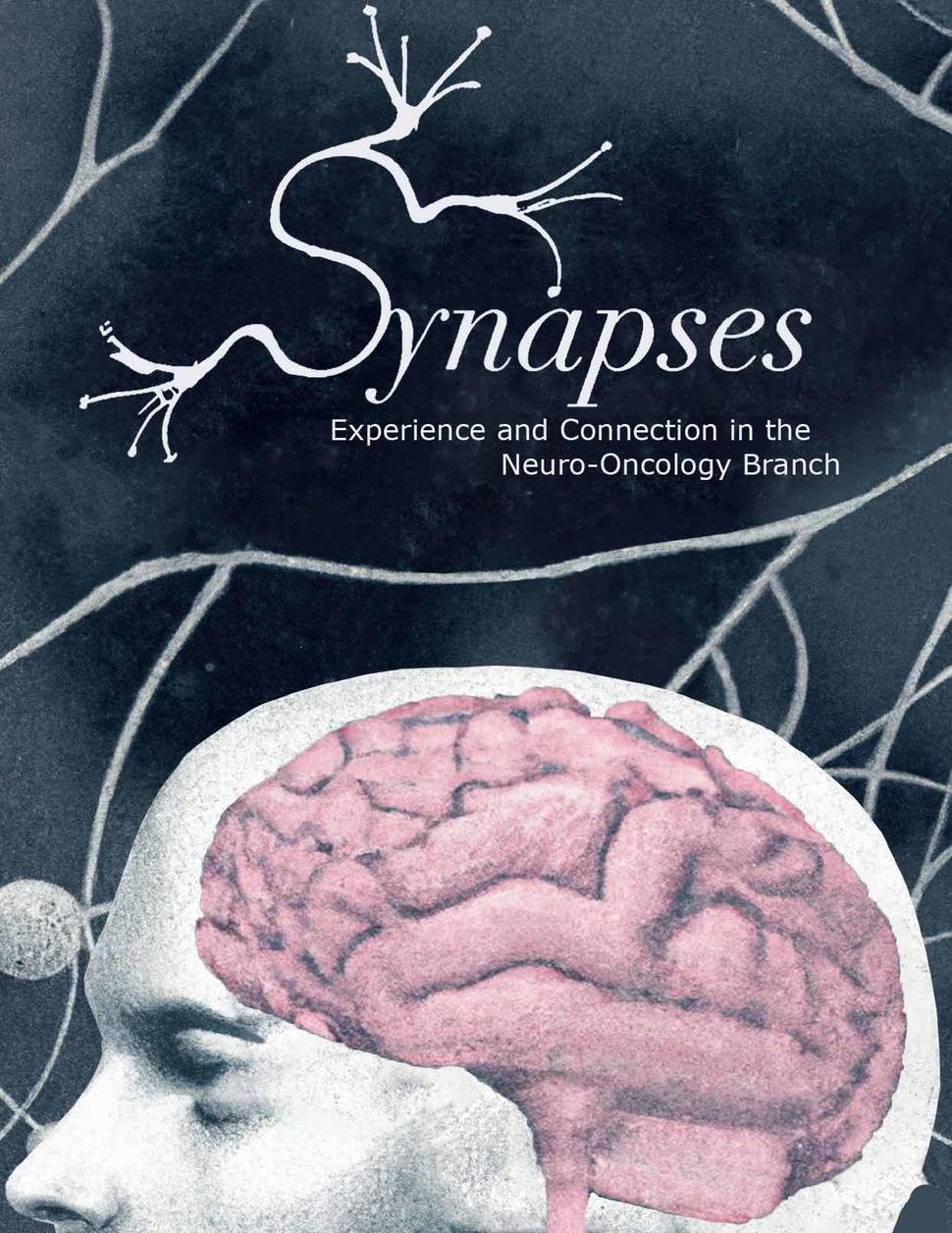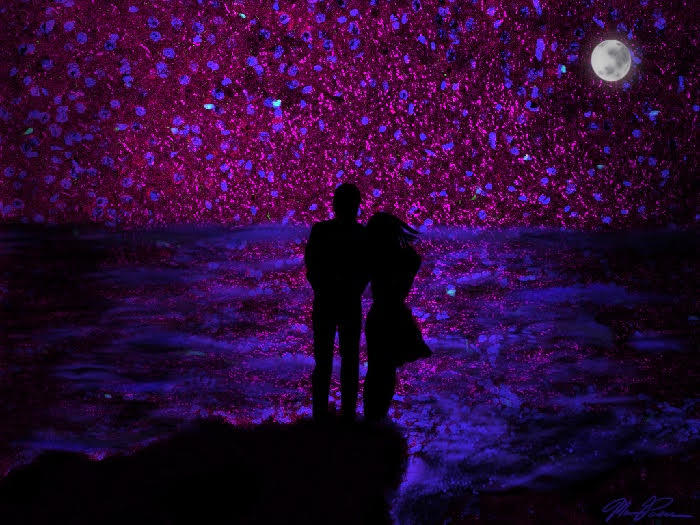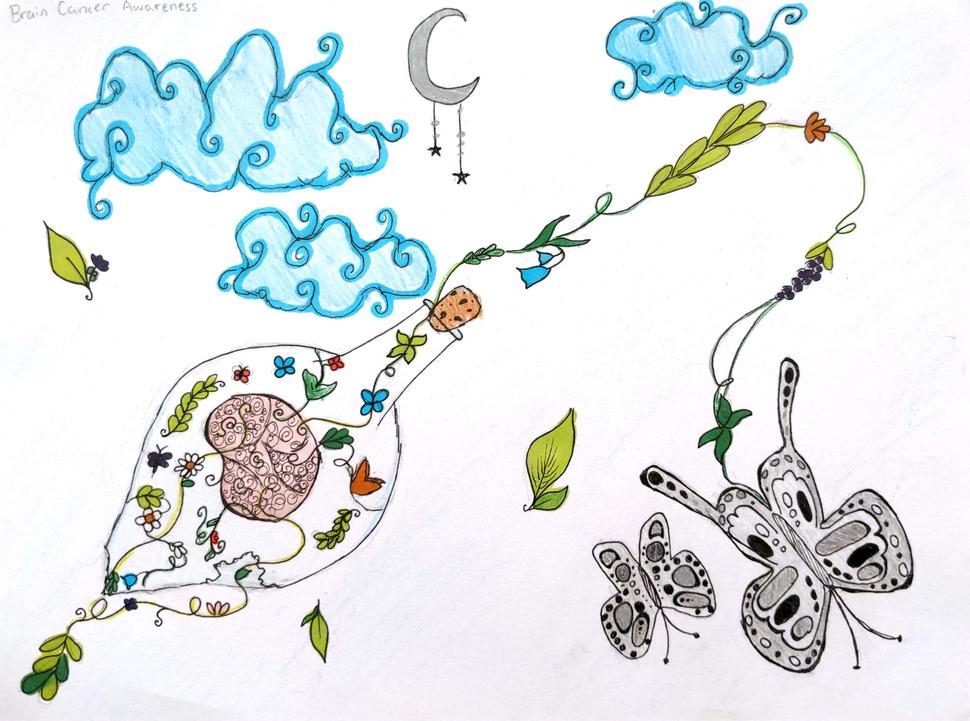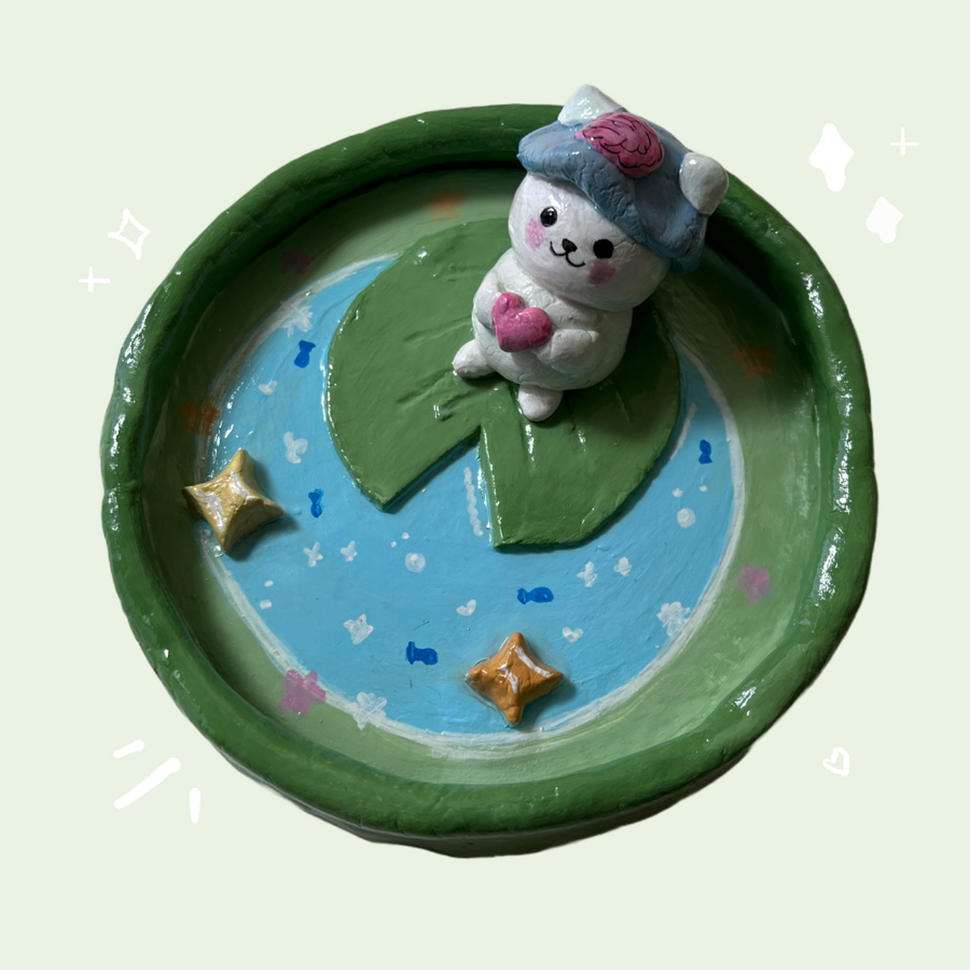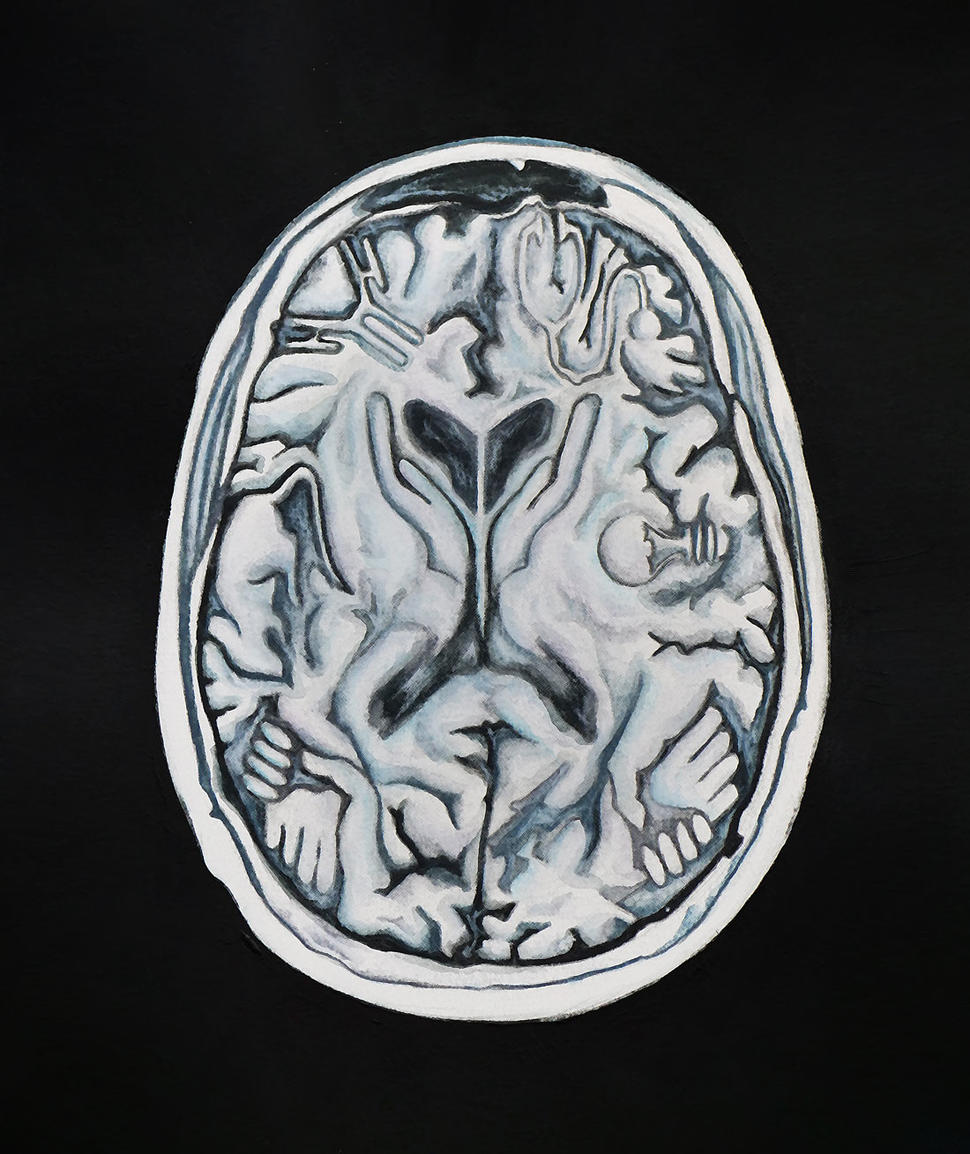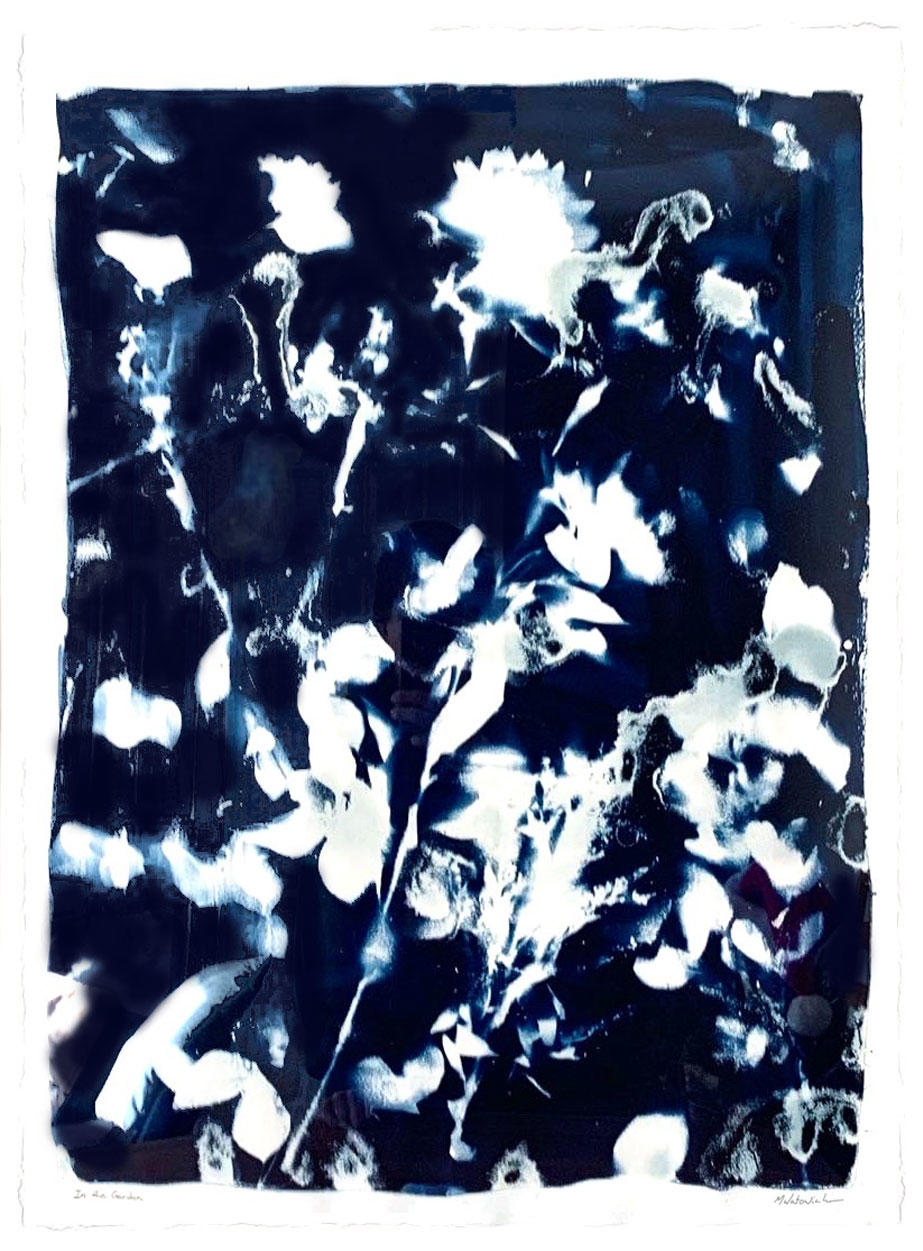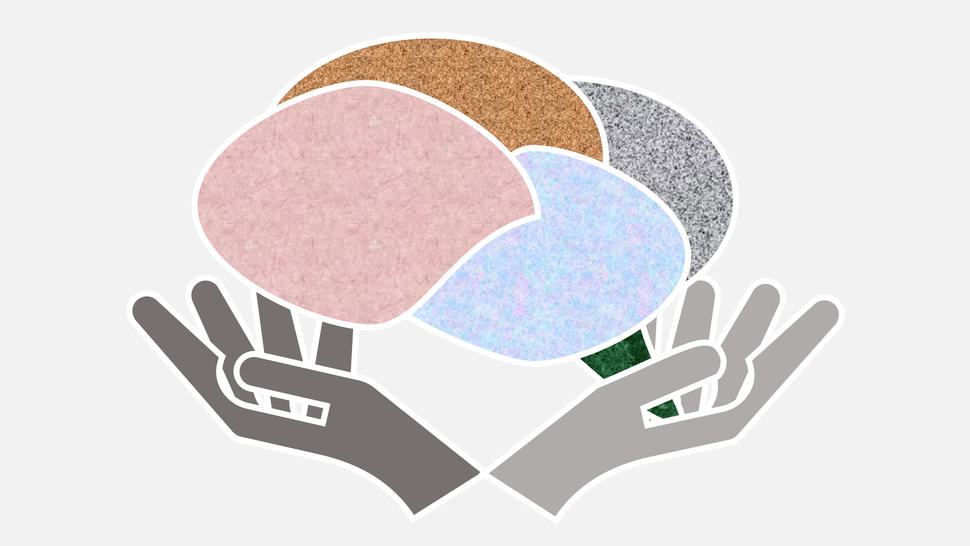NCI Neuro-Oncology Branch Hosts Art Exhibition in Honor of Brain Tumor Awareness Month
, by NCI-CONNECT Staff
Branch members shared poems, paintings, sculptures, and other works of art to display their creativity and build connections within the brain tumor community.
Brain Tumor Awareness Month (BTAM) takes place each May, in order to bring together the brain tumor community and educate those living with a brain tumor. This year in honor of BTAM, members of the NCI Center for Cancer Research's Neuro-Oncology Branch (NOB) were invited to submit artworks that speak to their experience working in neuro-oncology through a variety of lenses and perspectives. This exhibit, called "Synapses," largely focused on themes of community and connection within the field—experiences that can be both uniquely individual or shared by a larger network. Works by seven artists are displayed below, and range in medium from poetry and painting to sculpture and confocal microscopy. Accompanying each artwork is a short description from the artist about their piece. We hope these works provide a glimpse into the creativity, diversity, and community that make up the NOB—and that they help raise awareness about the importance of advancing care for people suffering from brain and spine tumors.
Connections
Maeve Pascoe, Medical Research Scholars Program (MRSP) Fellow
This picture is not one, but two images; the background is a photo, the foreground is an illustration. The background is a confocal microscopy image of the corpus callosum, stained for its many cellular components, created as part of research to understand how those components and their interactions can bring about disease states. However, the corpus callosum itself is beautiful in its simplicity; it is what allows for connections across brain hemispheres, and what inspired the foreground of this picture. The illustration in the foreground is of two people, connected to each other, standing on a precipice above the sea, witnessing the beauty of the expansive universe. The microcosm of the brain and the macrocosm of the universe are not all that different, and in the end, it is our connections, between our cells and between ourselves, that give our experience of the world meaning.
Hope is a Flower
Brita Anderson, NCI-CONNECT Laboratory Technician, and Her Daughter, Bella
Don't give up hope
It's a very slippery slope
Grasp the rope
Grasp the rope
The rope is like a vine
It grows stronger as you climb
To the top you'll go
When you reach the top, you'll have grown
Through death and life
Hardship and strife
You've only got one life
Live it like your last . . .
Don't give up hope
Heart of Hope: A Cat’s Tale
Zuena Karim, Cancer Research Training Award (CRTA) Fellow
This air-dry clay sculpture honors the unwavering hope that persists in the face of adversity. Atop the sculpture rests a cat figure, embodying the strength and resilience of each patient, caregiver, and those working in neuro-oncology. Its paws clasp a heart—a symbol of love and compassion—and it wears a gray hat with a brain as an ode to Brain Tumor Awareness Month. The lily pad upon which the cat sits represents the stillness and calmness of water that surrounds it, signifying that hope and peace can be found in challenging times. As you gaze upon this sculpture, let it be a reminder that hope, love, and peace are present. Let it inspire you to stand strong.
Networks
Raleigh McElvery, NOB/NCI-CONNECT Scientific Communications Editor
To me, nothing represents connection more than the brain’s complex networks. This illustration of an MRI scan contains various symbols of the NCI Neuro-Oncology Branch’s connections and community: two pairs of hands clasping one another (one pair in each hemisphere), hands cradling a heart, a mouse to represent our preclinical research, an antibody to represent our immunology work, a stethoscope to represent our compassionate clinical care, and a lightbulb to represent the innovation and ingenuity that transpires at NCI every day.
In The Garden
Matthew Watowich, Cancer Research Training Award (CRTA) Fellow
Made with found flowers and organic matter, this cyanotype was inspired by the vibrancy, diversity, and resilience of the community within the field of neuro-oncology. Most central to the piece was this idea that, much like a garden, individual components have beauty on their own but can come together to create something even larger and more impactful.
Hope
Masashi Watanabe, Ph.D., NOB Staff Scientist
I want to show support and hope for our neuro-oncology community, including brain cancer patients and their families.
Becoming A Part of Something Greater than Your Cancer
Brittany Cordeiro, NCI-CONNECT Program Manager
This written piece exemplifies the despair and hope that I have experienced interacting with people with brain and spine tumors. In my career of communicating with cancer patients, I empathize deeply with them when they learn about their diagnosis. But then I share with them that there are options, and they are not alone. There is a community behind them, there is someone out there facing the same battle they are facing. Together, we can hope, we can conquer, and we can connect, to give them exactly what they need in their journey to live longer, healthier, and happier.
"I came here to pray,
I came here to beg,
I came here to ask,
That if this is my last . . .
My last option,
My last resort,
My last hope,
That the treatment will work."
The resounding words in an email,
A phone call,
A message of desperation,
That makes my heart ache . . .
l ache for them,
Their family,
Their friends,
Their loved ones . . .
I close my eyes and pray,
I beg,
I ask,
That if we are their last . . .
Their last option,
Their last resort,
Their last hope,
That the treatment will work . . .
I reply with resounding words of empathy,
Of education,
Of expert care,
That I know they'll receive when they visit here.
"Together, we can conquer,
Together, we can outlast,
Together, we can grow stronger,
Than the cancer in your brain or spine you're facing . . .
A community connected is what we are,
A community that cares deeply,
A community that shares wisely,
A community where you will become greater than your cancer."
